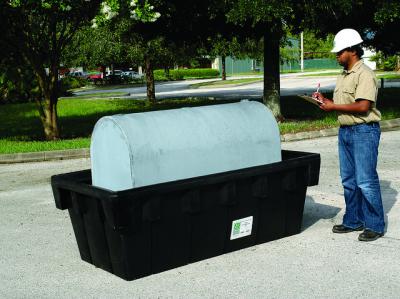The epa specifies under 40 cfr 264 193 b that secondary containment systems are required to prevent any migration of wastes or accumulated liquid out of the system to the soil ground water or surface water during the use of the tank system.
Chemical tank containment requirements.
The occupational health and safety administration s rules for spill containment work in conjunction with guidelines from the epa dot and others.
Containers that do not contain free liquids need not be considered in this determination.
Individual bunds are recommended for large tanks bund walls should be 0 5 m or greater and bunds should hold 75 of the volume of the largest tank.
Run on into the containment system must be prevented unless the collection system has sufficient excess capacity to contain any run on which might enter the system.
These regulations focus on training and range from specific osha spill kit requirements to somewhat nebulous guidelines for secondary containment.
Or 4 an equivalent device as approved by the regional administrator.
1 constructed of or lined with materials that are compatible with the wastes s to be placed in the tank system and must have sufficient strength and thickness to prevent failure owing to pressure gradients including static head and external hydrological forces physical contact with the waste to which it is exposed climatic conditions and the stress of daily operation.
Secondary containment for tank systems have similar requirements at 40 cfr 264 193.
3 the containment system must have sufficient capacity to contain 10 of the volume of containers or the volume of the largest container whichever is greater.
Minimum requirements of how the system must be constructed are listed in 40 cfr 264 193 c and include.
The ufc secondary containment requirements apply to hazardous materials not just hazardous wastes but their secondary containment standards are similar to the rcra requirements.
B to meet the requirements of paragraph a of this section secondary containment systems must be at a minimum.
In their verbiage containment areas should be liquid tight.
D secondary containment for tanks must include one or more of the following devices.
1 a liner external to the tank.
Small aboveground storage tanks such as methanol and chemical tanks that have volumes between 1 m 3 and 5 m 3 or when there volume is included with other volumes stored on site exceed the total volume of 5 m 3 per site must be double walled or have secondary containment.




























